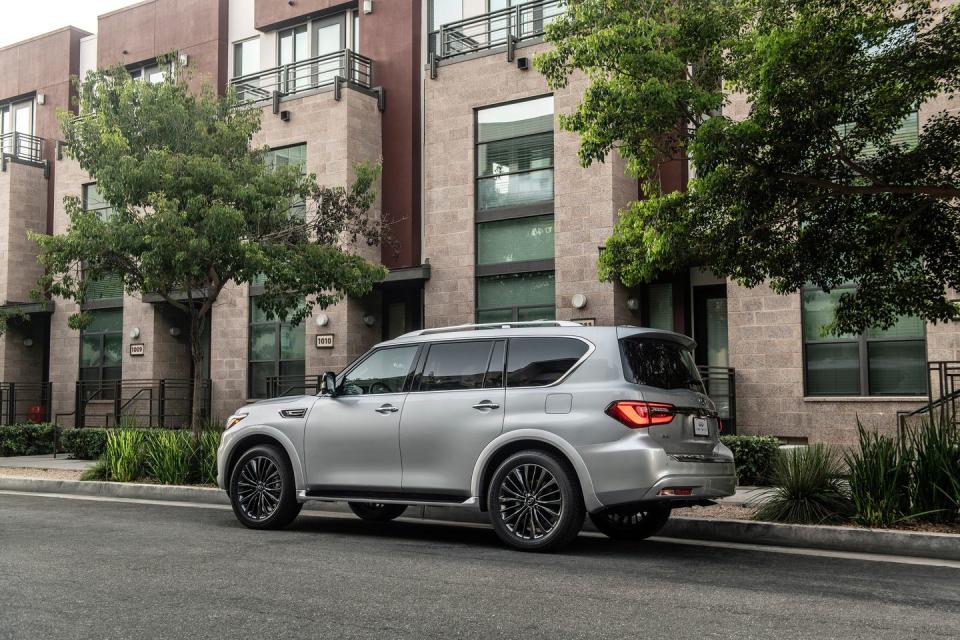Tested: 2021 Infiniti QX80 Remains Relevant

Most of the changes for the 2021 Infiniti QX80 read like the usual minor year to year evolutions that you expect on a vehicle that's been around awhile and still sells just fine. The video rear-view mirror is a little bit bigger and higher resolution. There are two new interior colors, Sahara Stone and Truffle Brown. They renamed the trim levels, and some of the electronic driver aids such as blind-spot intervention and adaptive cruise control, are now standard. Oh, and they dropped the price by $6,970. That last bit seems important.
That's for a maxed-out QX80, which in 2020 cost $92,845 for a Limited 4WD. The 2021 tops out at $85,875. And while Infiniti points out that it's not exactly apples to apples—the 2020 had some different cosmetic embellishments—that's still a major discount. When we last tested a QX80, in 2018, we called it "simultaneously a good deal and overpriced" because it cost so much more than the fundamentally similar Nissan Armada. Now that price gap is narrower. We're so influential it's scary.

The revised pricing is accompanied by a new trim hierarchy: Luxe, Premium Select, and Sensory, each of which is available in either rear-wheel drive or full-time four-wheel drive (with a low-range transfer case). There are basically no options—each trim is built to a single spec with the exception of premium paint ($695) and illuminated kick plates ($485). The split bench second-row seat, which increases passenger capacity from seven to eight and was a $250 option last year, is now a zero-cost option across the range. And expensive add-ons such as rear-seat entertainment ($2,000) and the ProActive driver-assist package ($3,300) are standard, provided you step to the top-of-the line Sensory trim. The entry-level model, Luxe, costs a little more than it did last year, but now includes adaptive cruise control, lane-departure prevention, and blind-spot intervention as well as distance-control assist, which will maintain a set distance from the car ahead of you even when you're not using cruise control. That trick 9.6-inch rearview mirror, which can switch to a video feed—handy if the inside of the car is packed to the gunwales with stuff—is now standard, too.

 Yahoo Autos
Yahoo Autos 